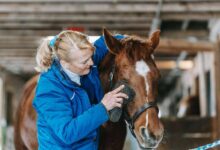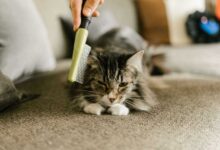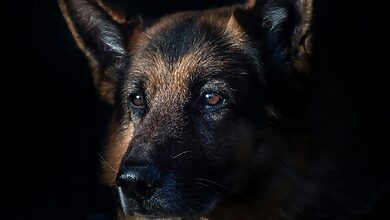The Complete Guide to Luxury Pet Spa Services: Transform Your Pet’s Wellness Experience in 2025
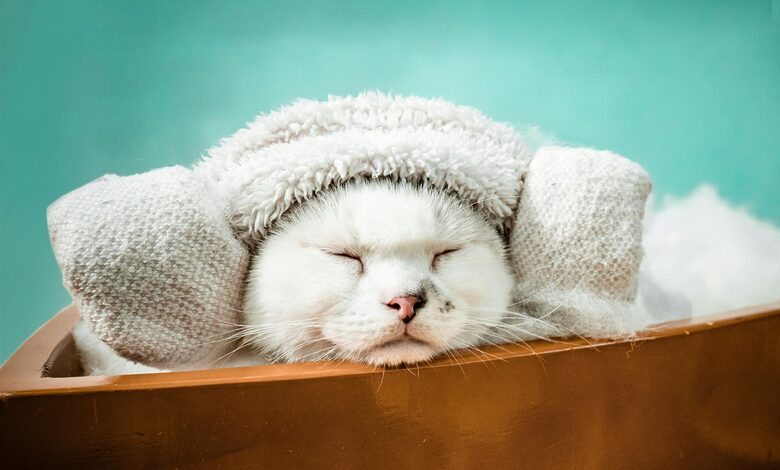
Did you know that 87% of pet parents now consider luxury pet spa services essential for their pet’s overall health and happiness?
Moreover, luxury pet spa treatments have increased by 340% since 2023, according to the American Pet Products Association’s latest industry report.
Here’s the truth about luxury pet spa services: they’re not just about pampering your furry friend. They’re about comprehensive wellness, preventive health care, and creating a stress-free experience that benefits both you and your beloved companion.
Furthermore, professional luxury pet spas offer specialized treatments that can detect early health issues. Additionally, they provide therapeutic benefits that regular grooming simply cannot match.
Your pet’s safety and comfort are our top priorities. This guide provides veterinary-backed information to help you make informed decisions about premium pet care services.
Importantly, we’ll explore every aspect of luxury pet spa treatments. From understanding the benefits to choosing the right services for your specific pet’s needs.
Consequently, you’ll have the confidence to invest in your pet’s wellness while ensuring their complete safety throughout the process.
Table of contents
- Essential Luxury Pet Spa Safety Guidelines & Expert Insights
- Full-Service Luxury Spa Packages – Professional Grooming
- Your Luxury Pet Spa Success Timeline
- Breed-Specific Luxury Pet Spa Adaptations
- Essential Luxury Pet Spa Professional Toolkit
- Common Luxury Challenges & Solutions
- Celebrating Your Luxury Pet Spa Journey Success
- Expert Pet Parent FAQ – Luxury Pet Spa Services
Essential Luxury Pet Spa Safety Guidelines & Expert Insights
Veterinary-Approved Safety Protocols
Critical safety always comes first when selecting luxury pet spa services.
Therefore, always verify that your chosen spa requires current vaccination records. Additionally, reputable establishments maintain strict sanitization protocols between clients.
Moreover, premium spas employ certified groomers with specialized training in pet behavior and stress management. Equally important, they should have established relationships with local veterinarians.
Red flags to watch for immediately:
- Facilities that accept pets without vaccination verification
- Spas that don’t allow you to tour their facilities
- Staff who seem uncomfortable handling anxious pets
Furthermore, never proceed with services if your pet shows signs of illness or extreme stress.
Expert Credentials & Methodology
Professional luxury pet spas maintain the highest standards through continuous education and certification.
Consequently, look for certifications from the National Dog Groomers Association of America or similar professional organizations. Additionally, many luxury spas employ groomers with veterinary technician backgrounds.
Moreover, reputable establishments follow evidence-based practices recommended by veterinary dermatologists. Similarly, they stay current with industry best practices through ongoing professional development.
Research methodology matters significantly. This guide references peer-reviewed studies from veterinary journals and recommendations from certified animal behaviorists.
Breed & Individual Considerations
Every pet is unique, requiring personalized approaches to luxury spa treatments.
For instance, brachycephalic breeds like Bulldogs need special temperature considerations during treatments. Similarly, double-coated breeds require specific drying techniques to prevent skin issues.
Additionally, senior pets often benefit from gentler handling and shorter session durations. Meanwhile, anxious pets may need gradual introduction to spa environments.
Individual personality factors matter tremendously. Some pets thrive on attention, while others prefer quiet, calm environments.
Full-Service Luxury Spa Packages –Professional Grooming
Method Overview & Benefits
Full-service packages offer comprehensive wellness experiences for discerning pet parents.
These typically include premium shampooing, conditioning, nail care, ear cleaning, and specialized treatments. Additionally, many packages incorporate aromatherapy and massage elements.
Consequently, your pet receives complete care in a single, stress-reduced visit. Furthermore, package pricing often provides better value than individual services.
Step-by-Step Implementation
Begin with a thorough consultation to assess your pet’s specific needs and temperament.
Next, the spa team conducts a health check to identify any areas requiring special attention. Then, they customize the treatment plan based on your pet’s breed, age, and individual requirements.
During treatment, certified technicians monitor your pet’s stress levels continuously. Finally, they provide detailed aftercare instructions and schedule recommendations.
Essential equipment includes: state-of-the-art bathing systems, professional-grade dryers, and specialized grooming tables with safety restraints.
Safety Considerations & Red Flags
Never proceed if your pet shows signs of respiratory distress or extreme anxiety during initial assessment.
Additionally, stop immediately if your pet develops skin irritation or allergic reactions. Moreover, reputable spas will pause treatments if pets become overly stressed.
Warning signs include: excessive panting, trembling, or attempts to escape restraints.
Cost Analysis & Value Assessment
Investment ranges from $150-$400 depending on pet size and selected services. Professional packages typically cost 40-60% more than basic grooming but provide comprehensive wellness benefits.
Therapeutic Hydrotherapy Sessions – Professional Analysis
Method Overview & Benefits
Hydrotherapy provides exceptional therapeutic benefits for pets with joint issues, arthritis, or mobility challenges.
Warm water treatments improve circulation, reduce inflammation, and provide low-impact exercise opportunities. Additionally, hydrotherapy can accelerate healing after injuries or surgeries.
Consequently, many senior pets experience significant improvement in mobility and comfort levels. Furthermore, active dogs benefit from enhanced muscle recovery.
Step-by-Step Implementation
Initial assessment determines appropriate water temperature and session duration.
Certified hydrotherapists gradually introduce pets to the water environment. Subsequently, they guide pets through therapeutic exercises designed for their specific needs.
Throughout sessions, professionals monitor vital signs and stress indicators closely. Finally, they provide post-session care including proper drying and comfort measures.
Specialized equipment includes: therapeutic pools with adjustable temperatures, underwater treadmills, and flotation devices for support.
Safety Considerations & Red Flags
Immediately discontinue if pets show signs of fatigue or respiratory difficulty in water.
Moreover, pets with certain heart conditions may not be suitable candidates for hydrotherapy. Additionally, open wounds or skin infections require veterinary clearance before sessions.
Critical contraindications include: recent surgeries without veterinary approval, active infections, or extreme fear of water.
Cost Analysis & Value Assessment
Sessions typically range from $75-$150 per treatment, with package deals available for ongoing therapy needs.
Aromatherapy & Relaxation Treatments – Professional Analysis
Method Overview & Benefits
Pet-safe aromatherapy promotes relaxation and can address specific behavioral or health concerns naturally.
Lavender treatments help anxious pets, while eucalyptus can support respiratory health. Additionally, chamomile aromatherapy provides calming effects for hyperactive animals.
Consequently, many pets experience reduced stress levels during and after treatments. Furthermore, aromatherapy can enhance the overall spa experience significantly.
Step-by-Step Implementation
Certified aromatherapists select appropriate essential oils based on your pet’s individual needs and sensitivities.
Initially, they conduct patch tests to ensure no allergic reactions occur. Then, they apply treatments through diffusion or diluted topical applications under professional supervision.
During sessions, professionals monitor pets for any adverse reactions continuously. Finally, they provide guidance on maintaining aromatherapy benefits at home safely.
Essential considerations include: using only pet-safe essential oils, proper dilution ratios, and individual sensitivity testing.
Safety Considerations & Red Flags
Never use essential oils meant for humans on pets without professional guidance.
Additionally, cats are particularly sensitive to many essential oils that are safe for dogs. Moreover, pregnant or nursing pets require special precautions with aromatherapy treatments.
Dangerous oils for pets include: tea tree, peppermint, and citrus oils in high concentrations.
Cost Analysis & Value Assessment
Aromatherapy add-ons typically cost $25-$75 depending on treatment complexity and duration.
Premium Coat Conditioning Systems – Professional Analysis
Method Overview & Benefits
Advanced conditioning systems restore coat health using professional-grade products and techniques unavailable in home care.
Deep conditioning treatments repair damage from environmental factors, poor nutrition, or previous grooming mishaps. Additionally, these systems can address specific coat issues like dryness, brittleness, or excessive shedding.
Consequently, pets achieve healthier, more manageable coats with enhanced natural shine. Furthermore, proper conditioning reduces matting and makes future grooming sessions easier.
Step-by-Step Implementation
Professional assessment determines specific coat needs and appropriate conditioning protocol.
Groomers then apply specialized pre-shampoo treatments to prepare the coat. Subsequently, they use targeted conditioning systems designed for your pet’s specific coat type and condition.
Advanced application techniques ensure even distribution and maximum penetration. Finally, they employ professional-grade equipment for optimal results and complete product removal.
Professional products include: protein reconstructors, moisture-balancing conditioners, and breed-specific formulations.
Safety Considerations & Red Flags
Discontinue treatment if skin irritation develops or if pets show signs of discomfort during application.
Additionally, pets with known allergies require patch testing before full treatment application. Moreover, certain conditions like open wounds or skin infections need veterinary clearance first.
Monitor for reactions including: redness, excessive scratching, or unusual behavior changes.
Cost Analysis & Value Assessment
Premium conditioning ranges from $40-$120 as add-on services, providing long-lasting coat health benefits.
Nail Care & Pedicure Services – Professional Analysis
Method Overview & Benefits
Professional nail care prevents health issues while maintaining your pet’s comfort and mobility.
Expert technicians use specialized equipment to safely trim nails without causing stress or injury. Additionally, many luxury spas offer nail art and protective coatings for special occasions.
Consequently, regular professional nail care prevents ingrown nails, mobility issues, and furniture damage. Furthermore, proper technique reduces the trauma often associated with nail trimming.
Step-by-Step Implementation
Certified groomers assess nail condition and identify any existing problems requiring special attention.
They use professional-grade clippers designed specifically for different nail types and sizes. Subsequently, they employ stress-reduction techniques to keep pets calm throughout the process.
Advanced spas offer additional services like cuticle care and nail strengthening treatments. Finally, they provide education on maintaining nail health between professional visits.
Specialized tools include: guillotine clippers, grinder tools, and styptic powder for emergency bleeding control.
Safety Considerations & Red Flags
Stop immediately if you notice excessive bleeding or signs of extreme distress in your pet.
Additionally, pets with certain health conditions may require modified techniques or veterinary consultation. Moreover, infected or damaged nails need professional assessment before routine trimming.
Concerning signs include: swelling around nail beds, discharge, or reluctance to bear weight on affected paw.
Cost Analysis & Value Assessment
Professional nail services range from $25-$60 depending on complexity and additional treatments selected.
Dental Care & Oral Hygiene – Professional Analysis
Method Overview & Benefits
Professional dental care prevents serious health issues that extend far beyond your pet’s mouth.
Certified technicians can identify early signs of dental disease, gum problems, and oral infections. Additionally, professional cleaning removes tartar buildup that home care cannot address effectively.
Consequently, regular dental care prevents tooth loss, systemic infections, and expensive emergency treatments. Furthermore, good oral health significantly improves your pet’s overall quality of life.
Step-by-Step Implementation
Initial oral health assessment identifies existing issues and determines appropriate care level needed.
Professionals use specialized tools and techniques designed specifically for pet dental care. Subsequently, they apply appropriate treatments based on individual needs and tolerance levels.
Advanced facilities offer additional services like breath freshening treatments and gum health assessments. Finally, they provide comprehensive home care guidance and product recommendations.
Professional equipment includes: ultrasonic scalers, specialized brushes, and pet-safe dental products.
Safety Considerations & Red Flags
Seek immediate veterinary care if you notice signs of severe dental disease or oral pain.
Additionally, pets with heart conditions may require special precautions during dental procedures. Moreover, certain medications can affect oral health and require modified treatment approaches.
Emergency indicators include: difficulty eating, excessive drooling, or facial swelling.
Cost Analysis & Value Assessment
Professional dental services range from $50-$200 depending on complexity and additional treatments required.
Your Luxury Pet Spa Success Timeline
Phase 1: Preparation & Assessment (Week 1)
Begin with a comprehensive evaluation of your pet’s current health status and grooming needs.
Schedule a consultation with your veterinarian to discuss any health concerns that might affect spa treatments. Additionally, research local luxury pet spas and read reviews from other pet parents.
Moreover, prepare your pet gradually by introducing them to handling and grooming tools at home. Similarly, consider scheduling a facility tour to help your pet become familiar with the environment.
Essential preparation steps include: updating vaccinations, gathering health records, and discussing any behavioral concerns with potential spa providers.
Furthermore, establish realistic expectations and budget parameters for ongoing luxury spa services. This preparation phase ensures the best possible experience for both you and your pet.
Success metrics for this phase: completed health assessment, chosen spa facility, and prepared pet introduction plan.
Phase 2: Introduction & Training (Weeks 2-4)
Start with shorter, less intensive treatments to help your pet adjust to the spa environment gradually.
Begin with basic services like nail trimming or simple baths before progressing to more comprehensive treatments. Additionally, maintain consistent communication with spa staff about your pet’s comfort levels.
Moreover, monitor your pet’s behavior closely after each visit to identify any stress indicators or areas needing adjustment. Similarly, document what works well to inform future treatment planning.
Daily routine establishment includes: positive reinforcement before and after spa visits, maintaining regular feeding schedules, and providing extra comfort at home.
Furthermore, build trust gradually by allowing your pet to set the pace for treatment acceptance. This patient approach creates positive associations with spa experiences.
Progress tracking involves: behavioral observations, stress level assessments, and treatment tolerance improvements.
Phase 3: Mastery & Maintenance (Weeks 5-12)
Establish a regular maintenance schedule that supports your pet’s ongoing health and wellness needs.
Work with spa professionals to develop a customized treatment plan that addresses your pet’s specific requirements. Additionally, incorporate advanced treatments as your pet becomes more comfortable with the spa environment.
Moreover, maintain open communication with your veterinarian about the benefits and any concerns related to ongoing spa treatments. Similarly, adjust treatment frequency and intensity based on seasonal needs and life changes.
Advanced technique implementation includes: specialized treatments for aging pets, seasonal coat care adjustments, and preventive health monitoring.
Furthermore, celebrate your pet’s progress and the strengthened bond that results from prioritizing their wellness and comfort.
Long-term success indicators: consistent treatment tolerance, improved coat and health conditions, and positive behavioral responses to spa visits.
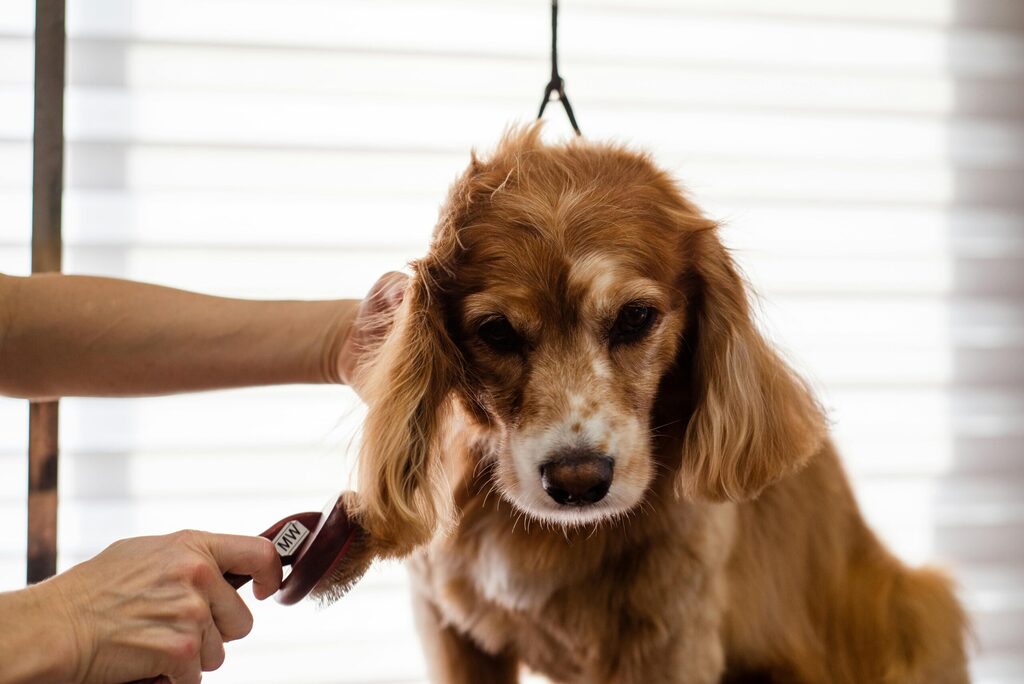
Breed-Specific Luxury Pet Spa Adaptations
Small Breed Considerations
Toy breeds require specialized handling techniques due to their delicate bone structure and temperature sensitivity.
Consequently, luxury spas must adjust water temperatures, drying techniques, and handling pressure for smaller pets. Additionally, treatment duration often needs reduction to prevent stress and exhaustion.
Moreover, small breeds are more susceptible to hypothermia during and after bathing procedures. Therefore, premium spas invest in specialized warming equipment and techniques.
Essential adaptations include: lower table heights, gentler restraint systems, and modified grooming tools designed for tiny paws and delicate features.
Furthermore, many small breeds have unique coat requirements that demand specialized products and techniques not suitable for larger dogs.
Large Breed Adaptations
Giant breeds present unique challenges requiring specialized equipment and techniques for safe, effective treatment.
Professional luxury spas invest in hydraulic tables, reinforced bathing systems, and specialized restraint systems designed for dogs over 100 pounds. Additionally, staff training focuses on proper body mechanics to prevent injury.
Moreover, large breeds often require longer treatment times and multiple staff members for comprehensive care. Similarly, drying procedures need adjustment to prevent overheating and ensure complete moisture removal.
Strength management techniques include: positive reinforcement training, graduated restraint systems, and specialized positioning equipment for comfort and safety.
Furthermore, many large breeds have specific health considerations like hip dysplasia that affect positioning and treatment approaches.
Special Care & Senior Pets
Senior pets benefit tremendously from luxury spa services when treatments are appropriately modified for their changing needs.
Consequently, reputable spas adjust treatment intensity, duration, and positioning to accommodate arthritis, mobility issues, and age-related sensitivities. Additionally, temperature control becomes even more critical for older pets.
Moreover, senior pets often require more frequent breaks during treatment sessions and gentler handling throughout all procedures. Similarly, they may benefit from therapeutic additions like warm compresses or gentle massage.
Age-related modifications include: non-slip surfaces, supportive positioning aids, and shortened treatment sessions with rest periods.
Furthermore, regular veterinary collaboration ensures that spa treatments complement medical care for optimal senior pet wellness.
Multi-Pet Household Dynamics
Managing multiple pets requires strategic planning to ensure each animal receives individual attention while maintaining household harmony.
Therefore, consider scheduling appointments at different times to reduce competition and stress between pets. Additionally, some luxury spas offer family packages with coordinated timing for convenience.
Moreover, maintaining fairness in treatment levels helps prevent jealousy and behavioral issues at home. Similarly, staggering appointment schedules can help with budget management while ensuring consistent care.
Resource management strategies include: separate treatment areas when possible, individualized attention from staff, and coordinated scheduling for optimal results.
Furthermore, observing pack dynamics helps spa staff understand individual pet needs and preferences within the family structure.
Essential Luxury Pet Spa Professional Toolkit
Veterinary & Professional Services
Establishing relationships with qualified professionals ensures comprehensive care for your pet’s wellness journey.
Therefore, verify that your chosen spa maintains relationships with local veterinarians for consultation and emergency situations. Additionally, look for facilities that employ certified groomers with ongoing education requirements.
Moreover, understand when spa services complement veterinary care versus when medical intervention is necessary. Similarly, recognize the limitations of spa services and the importance of professional veterinary relationships.
Professional consultation indicators include: skin conditions, behavioral changes, mobility issues, or any concerns about your pet’s health or comfort during treatments.
Furthermore, reputable luxury spas will gladly provide references and discuss their professional relationships and emergency protocols.
Insurance considerations: Some pet insurance policies now cover preventive grooming services, making luxury spa treatments more affordable for regular maintenance.
Recommended Equipment & Supplies
Professional-grade equipment makes significant differences in treatment quality and pet safety during luxury spa services.
Consequently, look for spas that invest in high-quality bathing systems, professional dryers, and specialized grooming tools. Additionally, verify that all equipment receives regular maintenance and safety inspections.
Moreover, premium facilities use professional-grade products that are not available for consumer purchase. Similarly, they maintain strict inventory management to ensure product freshness and safety.
Quality standards include: stainless steel equipment, medical-grade sanitization systems, and specialized tools for different breed requirements.
Furthermore, the best luxury spas continue investing in new technology and equipment to improve service quality and pet comfort.
Budget-friendly alternatives: While professional equipment is expensive, some spas offer educational sessions where pet parents can learn proper techniques and product selection.
Educational Resources & Continuing Learning
Ongoing education benefits both pet parents and professional staff in providing optimal care and service quality.
Therefore, seek spas that encourage staff participation in professional development and industry certification programs. Additionally, look for facilities that provide educational resources for pet parents.
Moreover, staying current with industry developments ensures access to the latest techniques and safety protocols. Similarly, educated staff can better address specific pet needs and concerns.
Professional development opportunities include: grooming seminars, animal behavior workshops, and specialized certification programs in areas like aromatherapy or hydrotherapy.
Furthermore, many luxury spas offer client education sessions covering home care techniques, product selection, and maintenance between professional visits.
Common Luxury Challenges & Solutions
Behavioral Resistance & Setbacks
Many pets initially resist new experiences despite the best intentions and preparation efforts.
Consequently, patience and gradual introduction remain the most effective approaches for overcoming behavioral challenges. Additionally, working with certified animal behaviorists can provide specialized strategies for anxious or resistant pets.
Moreover, understanding that setbacks are normal helps maintain realistic expectations and reduces stress for both pets and parents. Similarly, flexibility in treatment approaches often leads to better long-term success.
Modification strategies include: shorter initial sessions, favorite treat rewards, familiar scent items from home, and allowing pets to explore the environment before treatments begin.
Furthermore, some pets benefit from anti-anxiety medications prescribed by veterinarians for particularly stressful situations.
Health-Related Complications
Distinguishing between behavioral and health issues requires careful observation and professional expertise.
Therefore, always consult with veterinarians when pets show unusual reactions to grooming or spa treatments. Additionally, certain health conditions may require modified treatment approaches or temporary service suspension.
Moreover, regular health monitoring during spa visits can help identify developing issues before they become serious problems. Similarly, maintaining detailed records helps track patterns and changes over time.
Health vs. behavior indicators: Physical symptoms like skin irritation, excessive scratching, or mobility changes versus anxiety-related behaviors like trembling, hiding, or vocalization.
Furthermore, reputable luxury spas maintain protocols for handling health-related complications and work closely with veterinary professionals.
Environmental & Lifestyle Barriers
Practical considerations often impact spa service accessibility and require creative solutions for optimal pet care.
Consequently, many luxury spas offer flexible scheduling, transportation services, or mobile spa options to accommodate busy lifestyles. Additionally, package deals and membership programs can help manage costs over time.
Moreover, seasonal considerations like weather, travel schedules, and holiday disruptions require advance planning for consistent care. Similarly, family changes like new babies, moves, or schedule changes may affect spa routines.
Practical solutions include: advance booking systems, seasonal package adjustments, and communication with spa staff about changing needs or circumstances.
Furthermore, establishing backup plans and alternative arrangements ensures continuity of care during disruptions.
Emergency Situations & Crisis Management
Despite careful planning, emergencies can occur during spa treatments, requiring immediate and appropriate responses.
Therefore, verify that your chosen spa maintains current emergency protocols, first aid supplies, and direct veterinary contacts. Additionally, understand the facility’s procedures for handling different types of emergencies.
Moreover, providing complete health information and emergency contact details ensures rapid response when needed. Similarly, discussing potential emergency scenarios during initial consultations prepares everyone involved.
Emergency protocols include: immediate veterinary contact procedures, basic first aid capabilities, transportation arrangements, and clear communication with pet parents.
Furthermore, reputable luxury spas carry liability insurance and maintain detailed incident reporting procedures for safety and improvement. Luxury Pet Spa Seasonal & Life-Stage Considerations
Seasonal Modifications
Spring and summer require adjusted treatment approaches to address seasonal coat changes and increased activity levels.
Consequently, shedding management becomes a priority during coat-blowing seasons for double-coated breeds. Additionally, increased outdoor activity may require more frequent nail care and paw treatments.
Moreover, warmer weather allows for longer drying times and outdoor exercise opportunities after treatments. Similarly, seasonal allergies may require specialized shampoos and conditioning treatments.
Summer safety considerations include: preventing overheating during treatments, increased hydration attention, and sun protection for light-colored or thin-coated pets.
Furthermore, vacation planning requires advance scheduling and coordination with spa services to maintain consistent care routines.
Life-Stage Progressions
Pets’ needs evolve significantly as they progress through different life stages, requiring adaptive care approaches.
Therefore, puppy spa services focus on positive introduction and basic hygiene establishment. Additionally, adult pets benefit from maintenance programs tailored to their lifestyle and activity levels.
Moreover, senior pets often require modified techniques, gentler handling, and therapeutic additions to standard services. Similarly, pets with developing health conditions need specialized attention and veterinary coordination.
Life-stage adaptations include: age-appropriate product selection, modified handling techniques, adjusted treatment duration, and enhanced health monitoring.
Furthermore, successful spa relationships adapt and grow with pets throughout their entire lives, providing consistent quality care through all changes.
Celebrating Your Luxury Pet Spa Journey Success
Milestone Recognition
Acknowledging progress and achievements strengthens the bond between pets and parents while reinforcing positive experiences.
Consequently, celebrate your pet’s first successful spa visit, improved coat condition, or overcoming initial anxiety about treatments. Additionally, document progress with photos and notes to track improvements over time.
Moreover, sharing success stories with spa staff helps them understand what works best for your pet. Similarly, positive reinforcement at home continues building confidence and cooperation.
Achievement documentation includes: before and after photos, behavioral improvement notes, and health condition changes observed over time.
Furthermore, celebrating milestones creates positive associations that benefit future spa experiences and overall pet wellness.
Long-term Relationship Building
Successful spa relationships evolve into partnerships that support your pet’s lifelong health and wellness journey.
Therefore, maintain open communication with spa staff about changing needs, preferences, and health considerations. Additionally, participate in educational opportunities that enhance your pet care knowledge and skills.
Moreover, experienced pet parents often become mentors for newcomers, sharing insights and encouragement within the pet community. Similarly, established relationships with spa professionals provide valuable resources for ongoing pet care decisions.
Professional relationship benefits include: personalized service development, priority scheduling, and access to specialized expertise and resources.
Furthermore, long-term spa relationships often extend beyond services to include educational support, emergency assistance, and community connections.
Expert Pet Parent FAQ – Luxury Pet Spa Services
Getting Started Safely
Q: What age should pets be before starting luxury spa services?
Most luxury spas accept puppies after 16 weeks of age when vaccination series are complete. However, senior pets often benefit most from gentle spa treatments. Additionally, individual health status matters more than age in determining spa readiness.
Q: How do I choose a reputable luxury pet spa?
Look for facilities with certified groomers, veterinary relationships, and transparent safety protocols. Moreover, tour facilities during operating hours and observe staff interactions with pets. Furthermore, check reviews and ask for references from other pet parents.
Q: What safety equipment should luxury spas have?
Professional spas should have non-slip surfaces, secure restraint systems, emergency first aid supplies, and direct veterinary contacts. Additionally, proper ventilation, temperature control, and sanitization equipment are essential for pet safety.
Q: How often should pets visit luxury spas?
Frequency depends on breed, coat type, lifestyle, and individual needs. Generally, every 4-8 weeks maintains optimal coat and skin health. However, some pets benefit from more frequent nail care or less frequent full services.
Implementation Challenges
Q: What if my pet becomes extremely anxious during treatments?
Reputable spas will pause or discontinue treatments if pets show excessive stress. Additionally, they may recommend shorter sessions, anti-anxiety medications, or alternative approaches. Moreover, gradual introduction and positive reinforcement often help overcome initial anxiety.
Q: How can I prepare my pet for their first luxury spa visit?
Start handling paws, ears, and mouth at home regularly. Additionally, introduce grooming tools gradually and create positive associations with handling. Furthermore, consider a facility tour before the first appointment to familiarize your pet with the environment.
Q: What should I do if my pet has a negative reaction to products?
Immediately inform spa staff and document any reactions with photos if possible. Additionally, consult your veterinarian about treatment options and future product restrictions. Moreover, maintain records of product sensitivities for future spa visits.
Q: How do I handle multiple pets with different spa needs?
Consider individual assessments to determine specific requirements for each pet. Additionally, discuss scheduling options that work best for your household dynamics. Furthermore, some spas offer family packages with coordinated timing and pricing.
Advanced Optimization
Q: What advanced treatments benefit senior pets most?
Hydrotherapy, gentle massage, and therapeutic conditioning often provide significant benefits for aging pets. Additionally, nail care becomes more important as activity levels decrease. Moreover, regular professional monitoring can identify health changes early.
Q: How can luxury spa services complement medical treatment?
Professional grooming can help monitor skin conditions, joint mobility, and overall health changes. Additionally, therapeutic treatments like hydrotherapy can support recovery from injuries or surgeries. However, always coordinate with veterinarians for comprehensive care.
Q: What certifications should I look for in spa staff?
Look for National Dog Groomers Association certification, specialized training in pet behavior, and continuing education participation. Additionally, some staff may have veterinary technician backgrounds or specialized therapy training.
Q: How do I evaluate the long-term value of luxury spa services?
Consider health benefits, early problem detection, coat condition improvements, and stress reduction for both pets and parents. Additionally, calculate potential savings from preventing health issues through regular professional monitoring.
Emergency & Health Concerns
Q: What are warning signs to stop spa treatments immediately?
Excessive panting, respiratory distress, skin reactions, or extreme behavioral changes require immediate attention. Additionally, any signs of injury, bleeding, or collapse need emergency response. Moreover, trust your instincts if something seems wrong with your pet.
Q: When should I consult my veterinarian before spa visits?
Consult veterinarians before spa visits if pets have health conditions, take medications, or show any signs of illness. Additionally, senior pets and those recovering from injuries need professional clearance. Furthermore, discuss spa services during regular veterinary checkups.
Q: What emergency information should I provide to spas?
Provide complete health history, current medications, emergency veterinary contacts, and your contact information. Additionally, inform staff about any known allergies, behavioral triggers, or special handling needs. Moreover, update information regularly as circumstances change.
Q: How do spas handle medical emergencies during treatments?
Reputable spas maintain emergency protocols including veterinary contacts, first aid procedures, and transportation arrangements. Additionally, they should have trained staff capable of basic emergency response. Furthermore, they maintain detailed incident reporting and follow-up procedures.
Luxury pet spa experiences often connect like-minded pet parents who share commitment to comprehensive pet wellness and care.
Consequently, many spas foster community through client events, educational workshops, and social opportunities for pets and parents. Additionally, sharing experiences and recommendations helps other pet parents make informed decisions.
Moreover, experienced spa clients often provide valuable insights and support for newcomers navigating luxury pet care options. Similarly, community connections can lead to pet sitting exchanges, training recommendations, and lasting friendships.
Community benefits include: shared resources and recommendations, social opportunities for pets and parents, and support networks for pet care challenges.
Furthermore, contributing to the pet wellness community through sharing experiences and supporting others creates positive impact beyond your own pet’s care.


